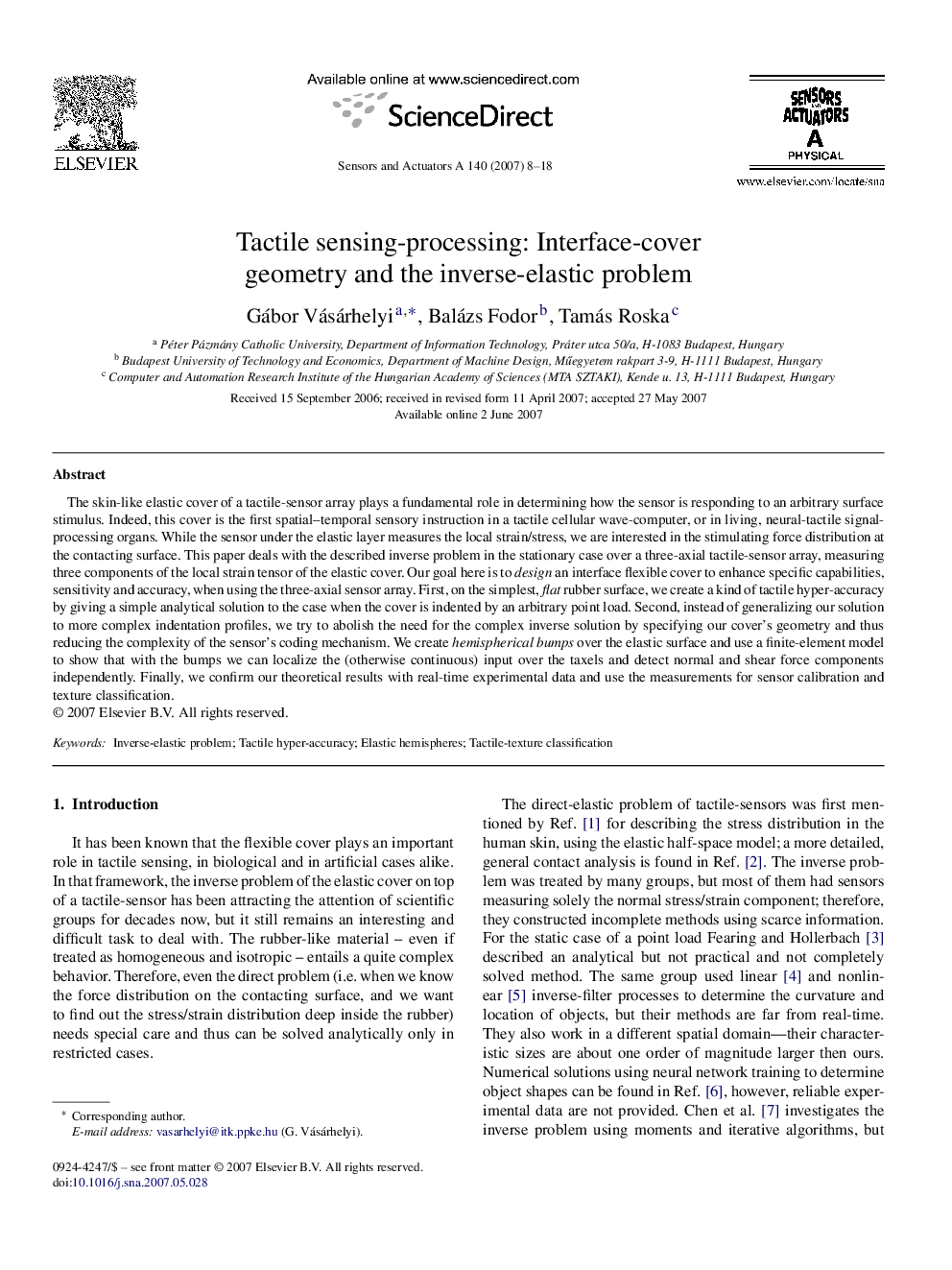| Article ID | Journal | Published Year | Pages | File Type |
|---|---|---|---|---|
| 738171 | Sensors and Actuators A: Physical | 2007 | 11 Pages |
The skin-like elastic cover of a tactile-sensor array plays a fundamental role in determining how the sensor is responding to an arbitrary surface stimulus. Indeed, this cover is the first spatial–temporal sensory instruction in a tactile cellular wave-computer, or in living, neural-tactile signal-processing organs. While the sensor under the elastic layer measures the local strain/stress, we are interested in the stimulating force distribution at the contacting surface. This paper deals with the described inverse problem in the stationary case over a three-axial tactile-sensor array, measuring three components of the local strain tensor of the elastic cover. Our goal here is to design an interface flexible cover to enhance specific capabilities, sensitivity and accuracy, when using the three-axial sensor array. First, on the simplest, flat rubber surface, we create a kind of tactile hyper-accuracy by giving a simple analytical solution to the case when the cover is indented by an arbitrary point load. Second, instead of generalizing our solution to more complex indentation profiles, we try to abolish the need for the complex inverse solution by specifying our cover's geometry and thus reducing the complexity of the sensor's coding mechanism. We create hemispherical bumps over the elastic surface and use a finite-element model to show that with the bumps we can localize the (otherwise continuous) input over the taxels and detect normal and shear force components independently. Finally, we confirm our theoretical results with real-time experimental data and use the measurements for sensor calibration and texture classification.
